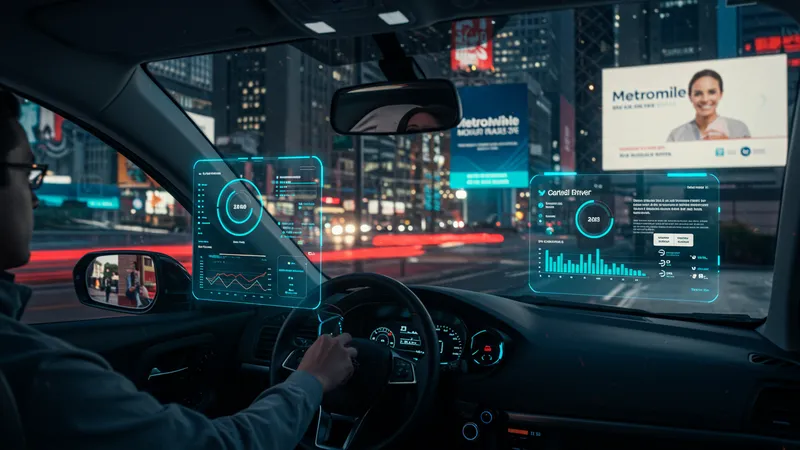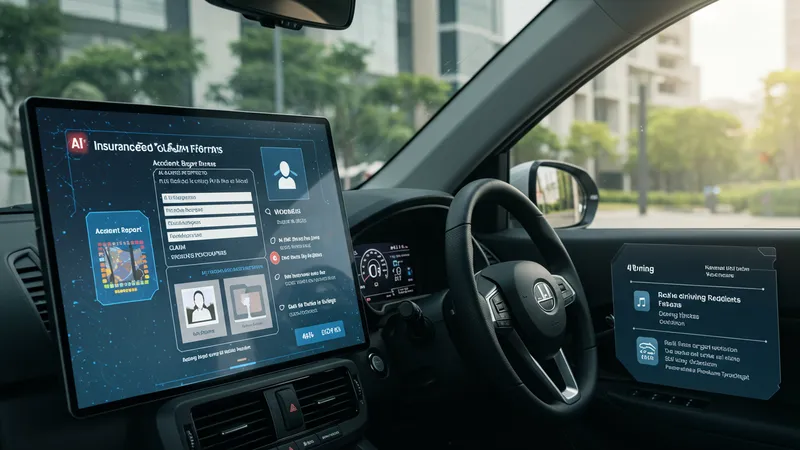

Understanding the evolving world of auto insurance is crucial for every driver. With new technologies, changing risk factors, and innovative policy features reshaping the industry, knowing the latest auto insurance trends can help you make smarter decisions about your coverage. These trends range from digital claims to the impact of telematics and pay-per-mile models that alter how premiums are calculated, ensuring protection aligns with modern driving habits.
Auto insurance trends are essentially shifts and advancements that influence the cost, accessibility, and user experience related to car insurance. Staying updated on these trends can help you secure better coverage, potentially save on premiums, and benefit from emerging features tailored to the digital age. Drivers today need to be aware of how technology, regulation, and customer expectations are transforming the landscape of vehicle insurance.

Telematics and usage-based models, like those powered by Root Insurance and Progressive Snapshot, are gaining traction for rewarding safe driving and lowering premiums. These policies rely on smartphone apps or vehicle devices to monitor real-world habits, giving conscientious drivers more control over their insurance costs. Pay-per-mile options from Metromile and Allstate Milewise benefit city dwellers or those who drive infrequently. Such models reflect a significant shift from static pricing to individualized, behavior-driven policies.
Another emerging trend is the rise of digital-first insurance companies and self-service platforms, exemplified by Lemonade Car and Esurance. These providers simplify everything from quoting to claims, leveraging artificial intelligence and streamlined mobile apps for a faster, frictionless experience. This not only saves time but helps reduce administrative costs, often passed on as lower premiums to policyholders.
Discount programs that harness smartphone telematics—such as State Farm’s Drive Safe & Save and USAA SafePilot—offer substantial savings if drivers adopt safe habits. These programs empower drivers to actively manage their costs, reflecting the broader trend toward personal accountability and data-driven incentives in car insurance. Both insurers and drivers benefit from the transparency and behavioral feedback these innovations provide.
Comparison tools like Policygenius continue to shape how drivers shop for coverage, making it easier to identify competitive prices and policy perks from various insurers. Digital platforms aggregate options in one place, aiding informed decision-making and enabling consumers to regularly reassess their coverage to match shifting trends and needs.
In summary, today’s auto insurance landscape is dynamic and increasingly tailored to individual preferences and driving patterns—an advantage for those who stay informed. The deeper details reveal even more valuable insights ahead as we examine pricing strategies, feature innovations, and digital transformations across the market.
One major development in auto insurance pricing is the adoption of usage-based models, where insurers like Metromile and Allstate Milewise set premiums based specifically on actual miles driven and real-time driving behaviors. This contrasts the historic approach of flat-rate pricing, offering fairer rates for low-mileage and careful drivers. The average cost for these products is often significantly lower for those who drive less, offering a meaningful incentive to watch your annual mileage.

Progressive Snapshot and State Farm Drive Safe & Save utilize telematics to refine risk profiles, enabling discounts that reward consistent safe driving. Unlike traditional plans, your rate can go down year-over-year if your monitored driving habits improve. This aligns with a broader shift toward personal accountability, where policyholders’ actions directly influence their bottom line.
Another pricing-focused trend is the increasing transparency around costs. Digital-first insurers like Lemonade Car and comparison services including Policygenius present pricing details, fee breakdowns, and expected discounts upfront, helping drivers avoid inadvertent expenses. This clarity builds trust and allows for more confident purchasing decisions among consumers.
Price flexibility is likely to become even more prominent as insurers further personalize both base premiums and discounts. The advancement of real-time data analytics means that pricing can adjust dynamically—potentially month-to-month—ensuring drivers pay only for the coverage and risk profile they genuinely represent, rather than being grouped into broad categories.
Technological advancements have introduced a suite of feature-rich products to the market. Companies like GEICO and Esurance are leading with AI-powered claims platforms, enabling drivers to report accidents, upload photos, and track progress directly from a mobile device. This reduces claim resolution times and lessens reliance on slow, traditional methods.

The “connected car” movement also plays a role in the value proposition. Insurers using telematics, such as Root Insurance and USAA SafePilot, integrate seamlessly with vehicles’ onboard systems or dedicated mobile apps. Policyholders get real-time feedback on driving habits, which not only provides insight but can lead to immediate premium reductions when safe practices are consistently maintained.
Personalization extends beyond pricing, as seen with digital insurance providers like Lemonade Car that offer modular, flexible policy selections. From accident forgiveness to coverage adjustments on the fly, these features cater to increasingly tech-savvy and convenience-oriented customers who expect insurance solutions to evolve alongside their digital lifestyle.
Mobile claims and account management are now industry standards. With apps like the Esurance Mobile App and GEICO’s digital claims tool, drivers are empowered to manage their insurance needs anytime, anywhere, experiencing less downtime and confusion in the event of an incident.
Usage-based programs typically deliver immediate savings over static annual premium models. For example, Metromile’s and Allstate Milewise’s pay-per-mile models can result in yearly costs several hundred dollars lower for infrequent drivers compared to standard policies. This format is particularly suitable for urban professionals, retirees, or anyone whose driving is irregular or confined to short distances.

Telematics-based incentives, like those from Progressive Snapshot and State Farm, offer ongoing opportunities for policyholders to reduce costs by improving their own driving habits. Insurers benefit from lower risk profiles and claim frequencies, creating a win-win situation that reinforces safer roads and customer loyalty through shared interests.
Platform-driven carriers, such as Lemonade and Esurance, have an edge in customer experience by simplifying every process step. From quoting to claims settlement, users enjoy streamlined workflows and intuitive interfaces, minimizing frustration and maximizing transparency. The rise in customer satisfaction ratings for these products reflects the importance of digital agility in modern insurance.
Online comparison resources like Policygenius empower consumers by consolidating insurance quotes and feature lists from multiple carriers. This level of transparency reduces the time and effort involved in securing suitable coverage, promoting competition, and ultimately driving down prices for shoppers who remain engaged in the market.
The influence of digital transformation is unmistakable, with nearly all major innovations in auto insurance happening through software and connected platforms. Automation, such as GEICO’s AI-powered claims, dramatically shortens the interval between an incident and a settlement, positioning speed as a new industry standard.

Data-driven personalization looks to define the future, as telematics programs become increasingly sophisticated. Root Insurance and USAA SafePilot continually enhance data collection methods, enabling more tailored risk profiling and reward mechanisms. This ongoing refinement will make insurance not only more accurate but also more responsive to individual circumstances.
As more carriers adopt modular products, optional add-ons, and flexible coverage periods, customers gain unprecedented control over their policies. Lemonade Car and other digital-first options serve as harbingers for this upcoming wave of customized insurance bundles, designed to suit unique lifestyles rather than mass-market averages.
Looking forward, the seamless integration of comparison engines like Policygenius with direct insurer platforms may further streamline the buying process and cement transparency as the industry’s expectation. For drivers who proactively follow trends and embrace digital innovation, the benefits of convenience, savings, and personalization are poised to grow even further.